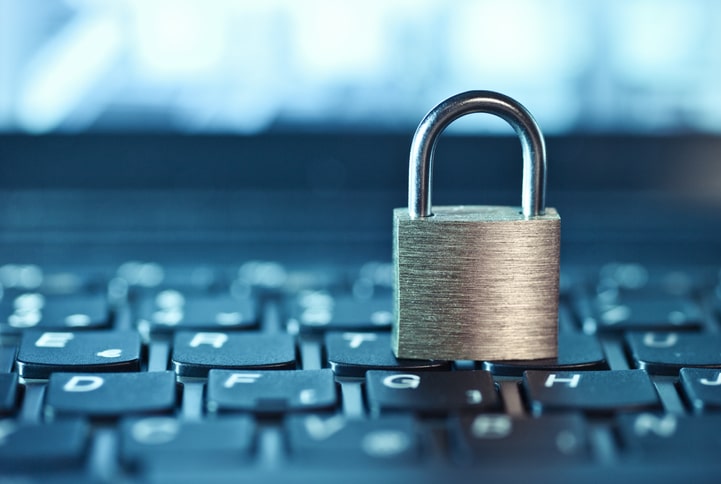Why You Should Be Using Next-Gen Endpoint Protection
According to the SentinelOne Global Ransomware Report 2018, more than half of U.S. organizations that were infected with ransomware blamed legacy anti-virus protection for failing to prevent the attack.
Since then, nearly 7 out of 10 of these companies have replaced legacy anti-virus with nex-gen endpoint protection. This is because it’s needed to prevent ransomware infections today.

You Can’t Trust Your Anti-Virus To Stop Ransomware
This distrust in legacy anti-virus is leading informed businesses to shift to next-gen endpoint protection to defend against most of today’s IT security threats.
Next to employee carelessness (56 percent blamed this), the failed legacy anti-virus protection was considered the cause of successful ransomware attacks.
This is because legacy anti-virus vendors haven’t been building solutions for new IT threats, and they lack basic protections needed to foil most ransomware attacks.
“Attackers are treating paying companies like an ATM, repeating attacks once payment is made,” said Raj Rajamani, SentinelOne VP of Products. “The organizations with the most confidence in stopping ransomware attacks have taken a proactive approach and replaced legacy AV systems with next-gen endpoint protection. By autonomously monitoring for attack behaviors in real-time, organizations can detect and automatically stop attacks before they take hold.”
You Need To Protect More Endpoints Today
Gone are the days when you only had to worry about protecting your internal IT network with a handful of security technologies. With businesses using cloud and mobile technologies, there are more ways a threat can get in.
The Cloud has expanded network access to devices and services outside the firewall. Firewalls only protect your on-premises endpoints. Some of your employees probably work remotely from home offices or when traveling. This increases their exposure to security threats.
We must reconsider what our endpoints include. They have traditionally included things like computers, laptops, smartphones, tablets, printers and servers. Now we must consider cloud endpoints like web services and APIs (Application Programming Interfaces). Along with this, the way that we protect and defend our endpoints must change.
This means moving from only threat prevention to threat detection, response and recovery. You need endpoint security that employs powerful capabilities such as artificial intelligence (AI) and machine learning. Next-gen technology provides this.
Nex-Gen Endpoint Protection Is Now A Front-Line Defense
Endpoint security is a front-line defense against cyberattacks. This is because data is stored in your endpoints (computers, servers, etc.).
Traditional anti-virus can only detect malware that it recognizes. If it’s not recognized, or a threat doesn’t use malware, legacy anti-virus software won’t provide the protection you need.
The demand for nex-gen endpoint protection has increased so rapidly in recent years because of its effectiveness.
- It uses a system-centric approach to endpoint security.
- It examines every process and each of your endpoints.
- It detects malware and blocks it.
Nex-Gen Endpoint Protection:
- Provides techniques for the fastest detection for known malware.
- Identifies malicious files based on how they deviate from normal behavior.
- Collects data from machine learning and artificial intelligence algorithms to detect whether a file is malicious based on millions of other file samples.
- Has the ability to cache a copy of a file before it can be executed to protect against malicious payloads such as ransomware.
- Can replay attacks for analysis to help IT professionals learn about breaches and attackers. (The time after an attack is critical. They must be able to comprehend the scope of the breach, contain it and then remediate it.)
- Offers continuous monitoring and response to advanced threats.
- Has the ability to prevent exploits from being launched.
- Can keep an attacker from connecting to a target machine.
One Security Solution Is No Longer Enough
As the number and kind of new ransomware attack methods increase, older technologies have become less effective at protecting endpoints. And, there isn’t a one-size-fits-all when it comes to choosing the right next-gen endpoint protection for your business.
Your IT services company should do a thorough assessment and audit of your IT infrastructure to ensure the nex-gen tools you choose will effectively protect your end users.
Your IT advisor will assess your environment and help you with nex-gen product evaluations and selections. The tools you select must be lightweight and have minimal impact on a user’s computing capabilities.
They will also assist with the design, deployment and implementation of the solution, and test it for maximum effectiveness. Because all vendors’ products don’t necessarily communicate with others, they will need to ensure this doesn’t create any security gaps.
Networks require a multilayered security approach. This means protecting both hardware and software; no single solution can defend and protect against the variety of threats businesses face.
To combat today’s security threats means going beyond individual products and looking at endpoint security in a holistic manner.
We hope you found this article helpful. If so, check out the others on Our Blog.

LAN Infotech is a Microsoft Cloud Services Provider, IT Managed Support company and a leader in helping law firms, nonprofits and medical organizations deploy cloud solutions, manage computer networks, keep data protected and top technology management company. Businesses like yours need technology support to run highly-effective organizations.


